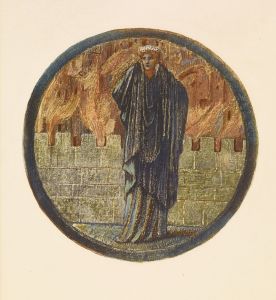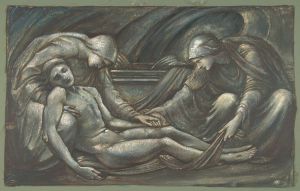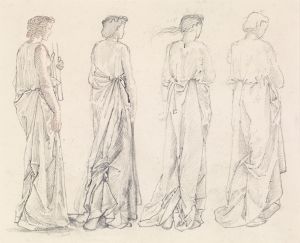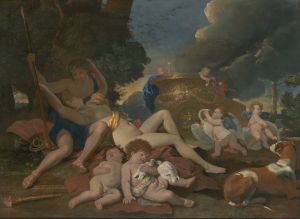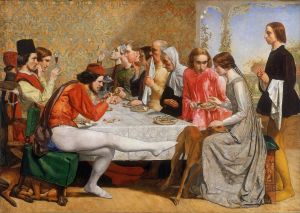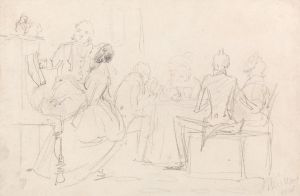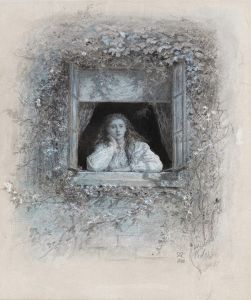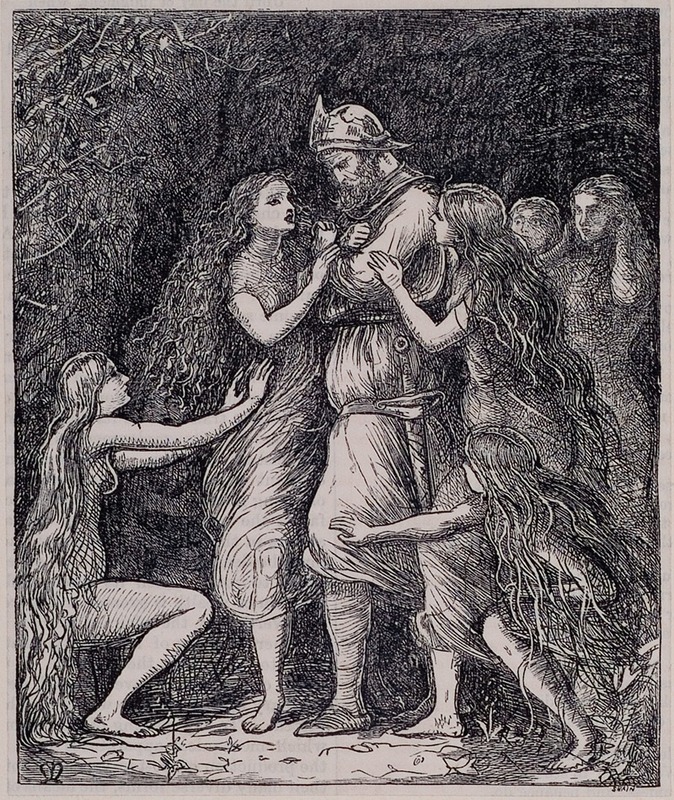
Tannhauser
A hand-painted replica of Sir John Everett Millais’s masterpiece Tannhauser, meticulously crafted by professional artists to capture the true essence of the original. Each piece is created with museum-quality canvas and rare mineral pigments, carefully painted by experienced artists with delicate brushstrokes and rich, layered colors to perfectly recreate the texture of the original artwork. Unlike machine-printed reproductions, this hand-painted version brings the painting to life, infused with the artist’s emotions and skill in every stroke. Whether for personal collection or home decoration, it instantly elevates the artistic atmosphere of any space.
Sir John Everett Millais, a prominent figure in the Pre-Raphaelite Brotherhood, created the painting "Tannhäuser" in 1849. This artwork is inspired by the German legend of Tannhäuser, a medieval knight and poet who becomes entranced by Venus, the goddess of love, and spends a year in her magical realm. The legend was popularized in the 19th century through various literary and musical adaptations, notably Richard Wagner's opera "Tannhäuser," which premiered in 1845.
Millais' "Tannhäuser" captures a pivotal moment from the legend. The painting depicts Tannhäuser in the Venusberg, the mythical mountain where Venus resides. In the composition, Tannhäuser is shown in a state of emotional turmoil, torn between the sensual allure of Venus and his longing for redemption and return to the mortal world. Venus, portrayed as a beautiful and seductive figure, attempts to hold him back, symbolizing the struggle between earthly desires and spiritual salvation.
The painting is characterized by Millais' meticulous attention to detail and vibrant use of color, hallmarks of the Pre-Raphaelite style. The lush, almost otherworldly setting of the Venusberg is rendered with intricate precision, emphasizing the enchanting yet perilous nature of the place. Millais' use of light and shadow enhances the dramatic tension between the characters, highlighting Tannhäuser's inner conflict.
"Tannhäuser" reflects the Pre-Raphaelite Brotherhood's fascination with medieval themes, romanticism, and the exploration of complex human emotions. The Brotherhood, founded by Millais, Dante Gabriel Rossetti, and William Holman Hunt in 1848, sought to revive the artistic principles of the early Renaissance, emphasizing naturalism, vivid colors, and elaborate detail. Millais' work on "Tannhäuser" exemplifies these principles, showcasing his technical skill and deep engagement with literary and mythological subjects.
The painting was well-received upon its completion and contributed to Millais' growing reputation as a leading artist of his time. It also illustrates the broader cultural interest in medieval legends and their reinterpretation through contemporary art and literature during the Victorian era. Millais' "Tannhäuser" remains a significant work within his oeuvre and the broader context of 19th-century British art.
Today, "Tannhäuser" is held in the collection of the Manchester Art Gallery, where it continues to be admired for its artistic excellence and its evocative portrayal of a timeless legend. The painting serves as a testament to Millais' mastery and the enduring appeal of the Pre-Raphaelite vision.





